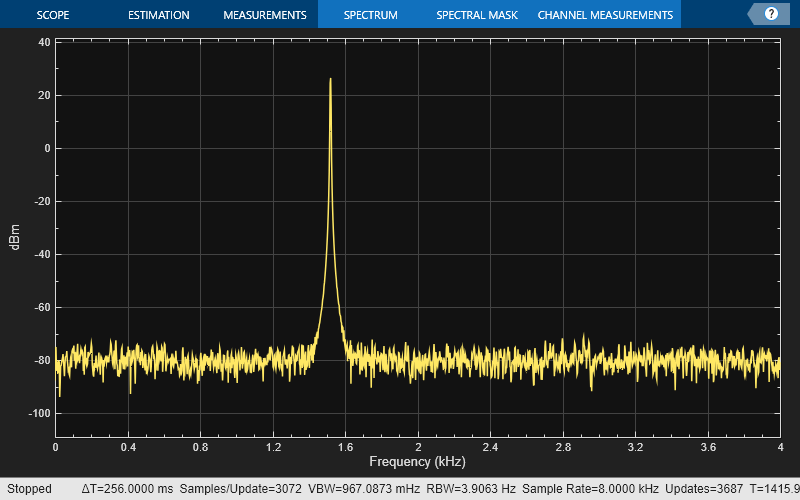dsp.NCO
Generate real or complex sinusoidal signals
Description
The numerically controlled oscillator, or NCO object
generates real or complex sinusoidal signals. The amplitude of the generated signal is always
1.
To generate real or complex sinusoidal signals:
Create the
dsp.NCOobject and set its properties.Call the object with arguments, as if it were a function.
To learn more about how System objects work, see What Are System Objects?
Creation
Description
nco = dsp.NCONCO
System object™, nco, that generates a multichannel real or complex
sinusoidal signal, with independent frequency and phase in each output channel.
nco = dsp.NCO( returns an
Name,Value)NCO
System object, nco, with each specified property set to
the specified value.
Properties
Usage
Syntax
Description
Y = nco()PhaseIncrementSource and the
PhaseOffsetSource properties are both set to
'Property'.
Y = nco(phInc,OFFSET)Y, with phase increment,
phInc, and phase offset, OFFSET, when the
PhaseIncrementSource and the PhaseOffsetSource
properties are both 'Input port'. phInc and
OFFSET must both be row vectors of the same length, where the length
determines the number of channels in the output signal.
Input Arguments
Output Arguments
Object Functions
To use an object function, specify the
System object as the first input argument. For
example, to release system resources of a System object named obj, use
this syntax:
release(obj)
Examples
Algorithms
This object implements the algorithm, inputs, and outputs described on the NCO block reference page. The object properties correspond to the block properties, except there is no object property that corresponds to the Sample time block parameter. The objects assumes a sample time of one second.
Extended Capabilities
Version History
Introduced in R2012a
